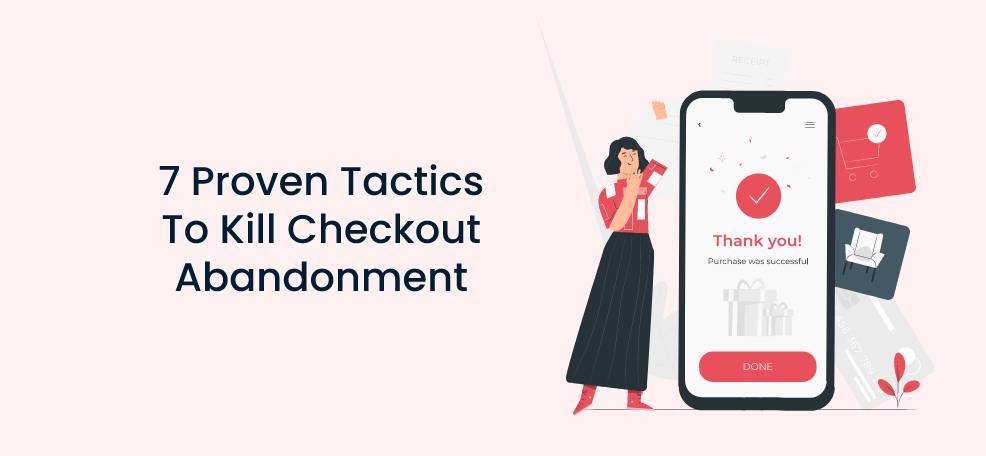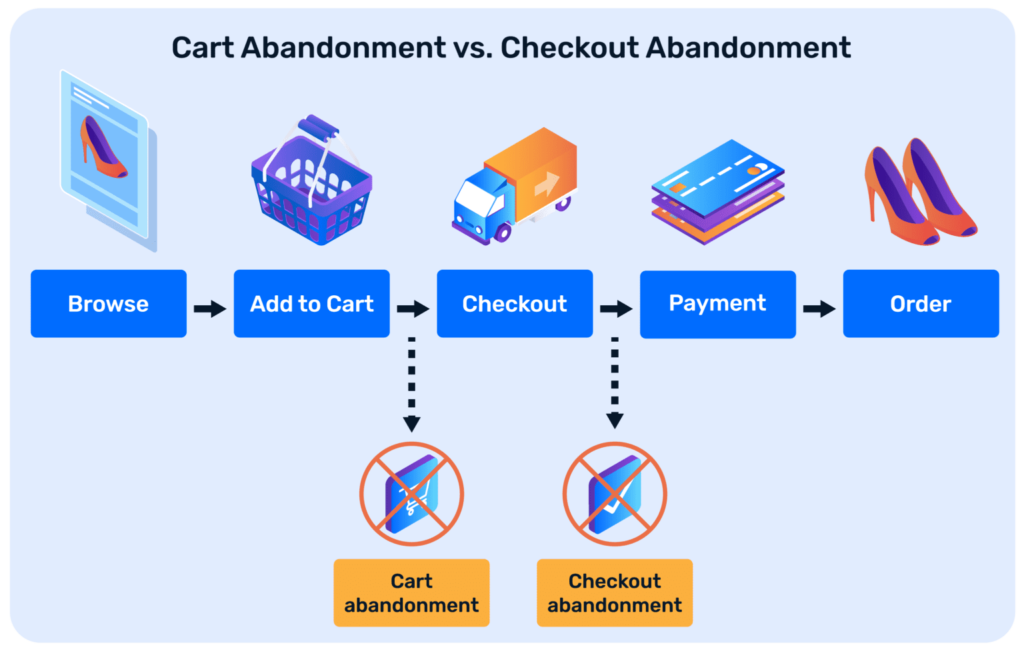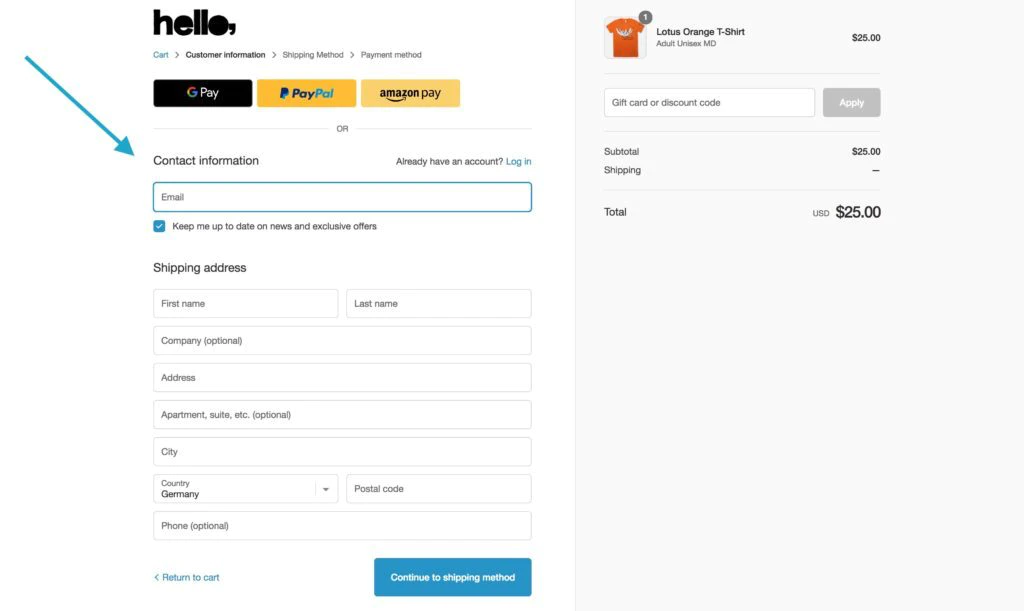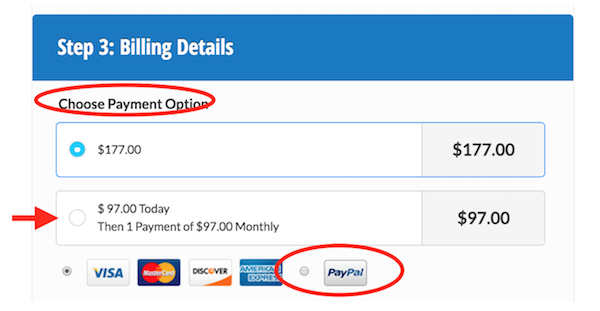It’s an uncomfortable fact that many novice eCommerce site owners don’t want to hear, but the overwhelming majority of online shoppers who place items in their shopping cart and even make it to the checkout page will never complete the purchase. Instead, these customers will abandon their checkout, meaning that they will either click out of the checkout page or end up removing the items from the shopping cart.
This is what is called checkout abandonment, and it’s an issue that many online business owners across several industries have to contend with every day. It’s frustrating to have customers so close to completing a transaction and making a sale, and while checkout abandonment is inevitable to some degree, it also doesn’t have to be as high as it may be now.
Here are seven proven tactics you can use to kill checkout abandonment, or at least keep it to the absolute minimum:
Why do customers abandon their checkout pages?
Learning how to reduce checkout abandonment as much as possible first requires you to understand why your customers are likely abandoning their checkout pages in the first place.
The truth is there is almost certainly no single reason you can pinpoint as to why customers are abandoning your checkout page specifically. There also could be reasons for abandonment specific to your online business that does not apply to most other businesses.
But the most common culprits for checkout abandonment, generally speaking, are the following:
Preferred payment method not available
Offer as many payment options for your customers as you can. Recent statistics show that over 70% of customers rely exclusively on a credit or debit card for online purchases. That means that 30% of customers prefer another payment method, and those customers will be the ones who walk away if you only allow payments to be done via credit card. Offer as many payment options as possible, such as through PayPal, Venmo, or mobile payments.
Account creation
If customers find that they have to jump through the hoops of creating an account with you to complete a purchase, they are more likely to walk away. Allow customers to check out and complete the purchase as a guest (you can make account creation optional rather than mandatory).
Higher additional costs
Many customers will find a product or item on sale and add it to their cart, only to see that the cost is much higher than anticipated due to shipping costs, taxes, or extra fees. Keep additional costs to an absolute minimum.
Slow shipping
High shipping costs are one reason why customers may abandon their checkout pages. But another reason, regardless of costs incurred, is slow shipping times. The only way to solve this is to pick an expedient shipping service or to pay the extra cost yourself for expedited shipping. Clearly indicate this to customers somewhere on the checkout page so they know that they can expect a fast delivery time.
Checkout is too time-consuming
To keep checkout times for customers as minimal as possible, require that they fill out only the bare minimum for information before checking out. If only a name, address, and financial info are required for you to complete a sale, then this is the only information that you should ask from the customer.
Poor Security
Make sure that all of your payment systems are PCI-compliant, meaning that all customer data is kept encrypted and only shared with members of your business on a strictly need-to-know basis. Stick to PCI-compliant payment systems and indicate this to customers in small but easy-to-read print somewhere on the checkout page so they feel safer buying from you. Cybercrime targeting online customers has been on the rise since the start of the pandemic, which is why people are much more cognizant of who they are buying from. If they don’t trust that they can buy from you securely, they’ll take their business elsewhere.
To be sure, there are more reasons beyond these why checkout abandonment happens. But the above culprits are among the biggest reasons why customers opt to click out of their carts at the last moment.
Proven tactics to reduce checkout abandonment
Now that we’ve covered some of the common reasons why checkout abandonment happens, let’s dive into some of the proven tactics that you can utilize to keep cart abandonment to a minimum.
1 – Keep the checkout process as simple as possible
As a golden rule, there should be a maximum of five steps that a customer has to take to complete the checkout process on your site. If you’ve ever done any online shopping before across different websites, you should be very familiar with how tiring it can be to have to complete a long and arduous checkout process.
Run yourself through your checkout process and be honest about how you feel about it. Did you feel it was easy and simple, or were you frustrated at all? And if there were any moments during the checkout process that made you feel tired or frustrated, what were they? These are the elements of your checkout process that you’ll want to have removed.
An example of a simple checkout process that actually sticks under the five-step-maximum golden rule would be:
- Require the Customer Name
- Require an Email Address
- Require a Physical Address (only if necessary for a physical item to ship)
- Require Financial Information (ensure PCI-DSS compliance)
2 – Do not mandate account creation
Do not make it a requirement that customers have to create an account with your site in order to buy from you. Make it an option if you would like, but always have a guest checkout option available as well.
In the case of the guest checkout option, no additional information should be required for the customer as would be the case if they were to create an account.
3 – Offer different payment options
Here you have the challenge of needing to provide the customer with more than one payment option while also keeping things simple. Don’t overcrowd your checkout page with a multitude of choices for payment.
Instead, give customers options but also keep things limited to the essentials such as a credit or debit card option, mobile payments, or a PayPal address. This will cover the bases for most customers.
4 – Ensure the checkout page has no hiccups
Your checkout page, besides being simple, should also be seamless in its operation with no delays or hiccups that can be attributed to a problem with it. The best way to test this is to actually use your checkout page yourself (while ensuring that you have a reliable internet connection so you can’t attribute the problem to a Wi-Fi issue) and see how it works.
If you do experience any delays with the checkout process, have the issue investigated by a professional developer. You can hire experienced freelance developers for around $40 an hour or less, which will be substantially less expensive than going to a firm or agency.
5 – Ensure your customers know about your security measures
As discussed previously, all payment options on your website should come PCI-DSS certified without exception. Make sure that customers know this by having a small but readable print indicating that your payment options come with PCI certification. This action alone will do much to reassure customers who may be a bit antsy about the security of their payment information.
6 – Give customers knowledge of all costs ahead of time
The checkout page should not be the first time that customers see any taxes, shipping, or additional fees that come with a product or service. Provide this information earlier in the process before the customer goes to checkout.
Too many customers add items to shopping carts and then go to checkout pages only to abandon the process there when they suddenly see it. Customers who are fully aware of this information ahead of time and still go to the checkout page will be more serious about actually buying the item(s) in their cart. Therefore, this action may reduce the number of customers who go to the checkout page in the first place, but it should increase the number of customers who complete the checkout and order the product once they are there.
7 – Allow customers to save their shopping carts
Another common scenario is how customers will load up their shopping carts, go to the checkout page, and then abandon the process because they have second thoughts and suddenly decide they don’t want to go through with the order. However, many of these customers may have ‘third thoughts’ and decide to buy the items, after all, only to be put off by the fact that they have to search through your store all over again.
This is why you should always allow customers to save their shopping carts so they can come back to them later if they have a change of heart. It will make things much easier for the customers who change their minds.
8 – Use Exit Pop Ups
Exit intent technology allows you to engage with your visitors through pop ups as soon as they intend to leave your site. It tracks mouse movements and helps boost sales conversions. Such popups, whether you want to create a lightbox, slide-in, gamified pop ups, or any other kind of opt-ins, can engagingly show your enticing brand offers that can drive them to continue with their purchases. You can offer free shipping, discounts, coupon codes, and more.
Conclusion
Remember, checkout abandonment to some degree is inevitable. The above tactics will not outright eliminate it, but they should greatly reduce the number of customers who checkout of their carts at the last minute.







